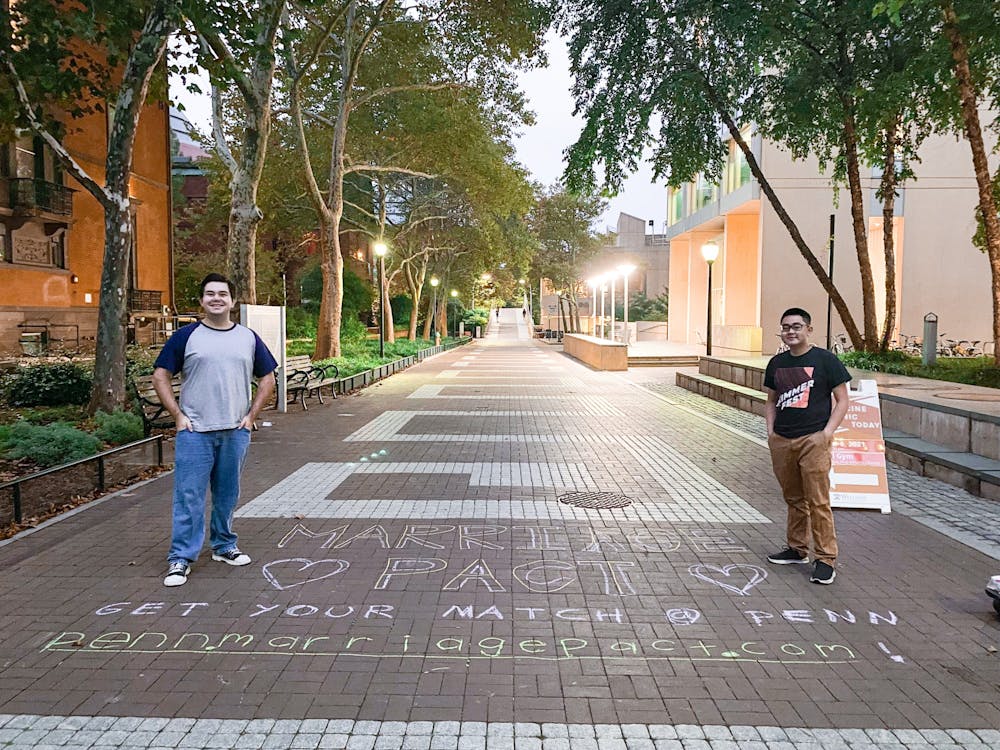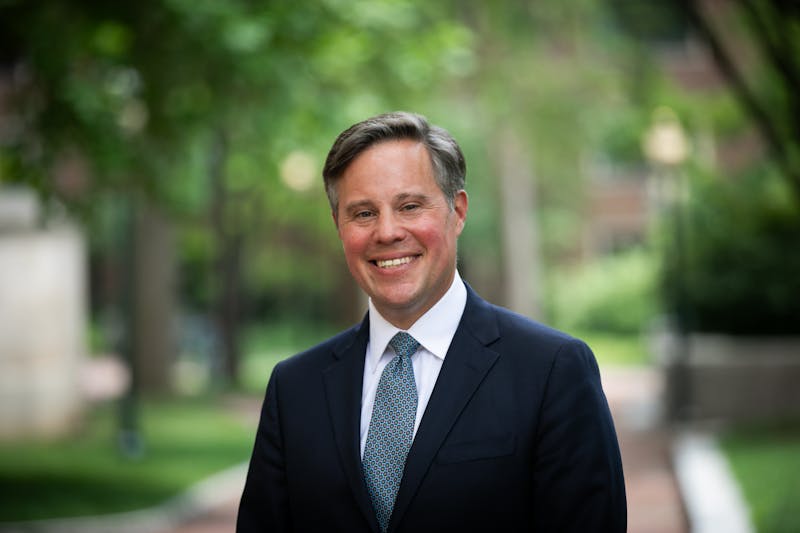
Penn Marriage Pact, the algorithm-based matching service, recently returned to Penn for its third year.
A total of 4,235 undergraduates filled out the Marriage Pact this year, which is approximately 40% of the Penn undergraduate population and a significant increase from the 2,759 participants from the first Penn Marriage Pact in March 2021.
The Marriage Pact opened on Nov. 8 and was originally slated to close on Nov. 12. However, the date was pushed to Nov. 15 in order to “accommodate the imbalance” of 344 more heterosexual women signing up than heterosexual or bisexual men to get matched, according to an email. Results were released on Nov. 16.
Co-organizer and Wharton senior Derek Nhieu said that one of the Marriage Pact’s goals was to allow people to make connections “outside of their usual means.”
“I feel like because people settle in so quickly, they don't often explore enough outside of those groups,” Nhieu said. “[With the Marriage Pact] you are basically answering a bunch of questions about yourself. And you have a whole program basically matching you to someone without you having to do anything.”
Despite its name, Nhieu emphasizes that the Penn Marriage Pact doesn’t have to be limited to kindling romantic relationships.
“You don’t have to be looking for something serious to take Marriage Pact,” Nhieu said. “Maybe this is just a marketing thing — but I think we try to do a decent job — people don’t realize that you can take [the] Marriage Pact to find friends.”
For some women in the heterosexual pool, the matches were not made to be romantic at all. College first year Katherine Mendez’s match was what the Marriage Pact called a “platonic match.” While that was what Mendez was looking for, she said had hoped that the Marriage Pact would pair her with someone closer to her age.
“I was trying to find a freshman friend, or just someone new that I hadn’t met,” Mendez said. “But I think for me, specifically, it would have been nice to meet someone that's a freshman, that maybe I could relate to more than an upperclassman.”
Some students questioned the necessity of including a question in the form that gave users an option to indicate a racial preference for a match.
“The one question where you could opt out of races was a bit weird,” College first year Jasjeev Singh said. “I wouldn't have personally put that in there. I can definitely understand people that would be inclined to pick that. But I think even including it as an option, even though you could answer no, sort of paints a picture about who's designing it, and I don't think that boded well with many others.”
Nhieu acknowledged that the question could potentially be misused.
“It makes a lot of sense to me, although I definitely know people will probably abuse it,” he said. “Like for me, I'm much more comfortable with people of color as a person of color. But I know some people probably abuse it, only picking out the races they want.”
Nhieu added that he hopes that Penn Marriage Pact can improve from here.
“[I’m] really hoping it cements as a Penn tradition and only continues to get better from here,” Nhieu said. “And then people can can really, you know, benefit and gain from it. I don't think there's many things like this at Penn that brings so many different people together.”
The Marriage Pact, which was first founded at Stanford in 2017, was brought to Penn by a group of six students in 2021. Currently, the Marriage Pact exists at 78 schools across the country, including Princeton University, Duke University, and Yale University.
The Daily Pennsylvanian is an independent, student-run newspaper. Please consider making a donation to support the coverage that shapes the University. Your generosity ensures a future of strong journalism at Penn.
Donate






